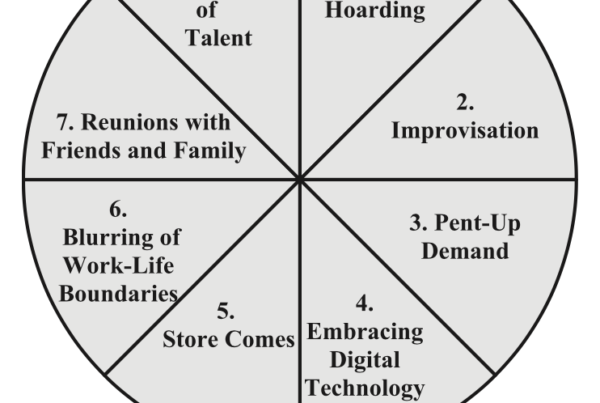In recent years there has been considerable managerial interest in defining, measuring and developing customer satisfaction. The marketing concept has forcefully argued that focusing on customer satisfaction is a better way to maximize profits than is focusing on sales. Indeed, a number of marketing academics and practitioners have written extensively differentiating marketing from selling, arid market- driven from product-driven organizations.
Unfortunately, this focus on generating customer satisfaction, however useful it may be, must be supplemented by business processes that focus on customer retention. There is a presumption that the processes of generating customer satisfaction will assure that satisfied customers will be automatically retained by the organization. This presumption is more a leap of faith, and empirical observations point to the contrary.
Importance Of Retaining Satisfied Customers
Retaining satisfied customers is important to organizations for at least three reasons. First generating customer satisfaction requires significant front-end investment, often not recovered from the margins of a single transaction.
For example, studies on customer retention economics in the automobile insurance industry suggest that it rakes, on average, eight years of continued premiums to recover the front-end investment, in addition to making the expected ret urn on assets on a given policy.
Other studies have also demonstrated that it is five times more expensive to create a customer than to retain one. In short, it pays to retain satisfied customers.
A second reason lot retaining satisfied customers is to preempt competitive threats. Compared to price wars, distribution blockades advertising slugfests and product patents, the ultimate strategy to preempt competition is to reduce mark et desire for another supplier’s product or service. In other words, it is creating a market monopoly by choice (sole source). For example, Campbell Soup and Singapore Airlines have demonstrated that satisfied customers don’t desire an additional choice, at least not in the short term.
Finally, and probably most important customer satisfaction is a dynamic and self-destructive phenomenon. In order to understand this 6illy, (stat we must define customer satisfaction and its key characteristically Customer satisfaction means meeting or exceeding customer expectations. Depending on the degree to which expectation are exceeded, it can range from ‘satisfied” to “very-satistied” to ‘delighted’ customers.
Customer satisfaction has a number of unique properties that are important to recognize for retention purpose. First, it is partly Psychological and partly Real. Expectations are psychological, but experiences are teal. Expectations have Larger van’ since (diversity) than experiences. This is due to the psychological nature of expectations and the diversity of sources Irons which they derive.
Therefore, one of the objectives in retaining customer satisfaction is to either reduce the variance in expectations or customize experiences for individual customers by marker segmentation and differentiation. For example, customers expect different things even in such basic needs as food, clothing and shelter. Furthermore, expectations are likely to be more diverse with respect to wants and desires as corn’ pared to needs.
As age, income, ethnic and lifestyle diversity increase, will increasingly have to practice segmentation and differentiation and customize our products and services to individual markets and customers.
Second. f an organization focuses on its most demanding customers and/or most demanding mark et expectations, it is likely to exceed all customer expectations. Therefore, in retaining customer satisfaction, it is crucial to target demanding customers and/or expectations.
For example, business travelers tend to be more demanding customers than pleasure travelers. If an airline organizes its processes to meet business customers’ expectations, it is likely to delight pleasure travelers.
Finally, and most critically for this discussion, expectations rise with satisfaction. The more a customer’s experiences exceed expectations, the greater the rise in his/ her future expectations. Therefore delighting the customer requires that retaining customer satisfaction is even more critical. This tendency to expect more with positive experiences suggests that organizations must implement a continuous improvement process by anticipating what customers will expect next. Retaining satisfied customers is as important as. if not misty important than, generating customer satisfaction
How To Retain Satisfied Customers
The best way to retain satisfied customers is to bond them with sour products, people and processes. There are three underlying bonding dimensions for retaining satisfied customers. The first relates to psychological bonding associated with an ongoing relationship.
The better organizations are at developing processes to maintain the psychological comfort of satisfied customers, the more likely exit barrier will be created, preventing customers from breaking the relationship. This comfort factor has been legendary for American Express. Nordstrom and Singapore Airlines, as well as for such brand names as Ivory soap, Kitchen Aid dishwashers and Levi jeans.
A second dimension of retaining customer satisfaction is the value bonding inherent in ongoing customer relationships. It includes such things as reliability, quality assurance, economic value and degree of product/service variety. Examples include AT&T, Campbell Soup. Taco Bell and Kellogg’s cereals.
A third dimension of retaining satisfied customers is structural bonding with customers on an ongoing basis. This includes organization structure, information systems and reward systems that link the organization to its customers in a relationship that makes it difficult, ii not impossible, foe the customer to switch to another supplier. Examples include Federal Express and professional services, especially medical and financial services.
Processes For Retaining Satisfied Customers
Following is a management tool for retaining satisfied customers. It is based on extensive research on customer retention and loyalty, and it is integrative in nature. It’s a process model, and is more useful for understanding than for prediction. The model is illustrated in Figure 1.
Psychological Bonding
Corporate culture. As the name implies corporate culture reflects the values and basic beliefs of the organization. In order to retain satisfied customers, it is viral that an organization’s corporate culture revolves around customers and markets. Does the customer’s viewpoint come first in all the activities of the organization’ Is the customer more than an afterthought in the design, procurement, manufacturing, operations, sales, service and support functions At Nordstrom, a department store chain, the customer always comes first in everything the company does. It even has a policy which requires that the frontline salespeople obtain permission from their supervisor ii they have to say no to a customer. They are empowered to commit the organization to meet or exceed customer expectations. It is no wonder that customers feel a sense of psychological comfort and come back again.
Responsiveness. This refers to the speed and courtesy with exceeded, it can range from “satisfied” to “very satisfied” to “delighted” customers.




